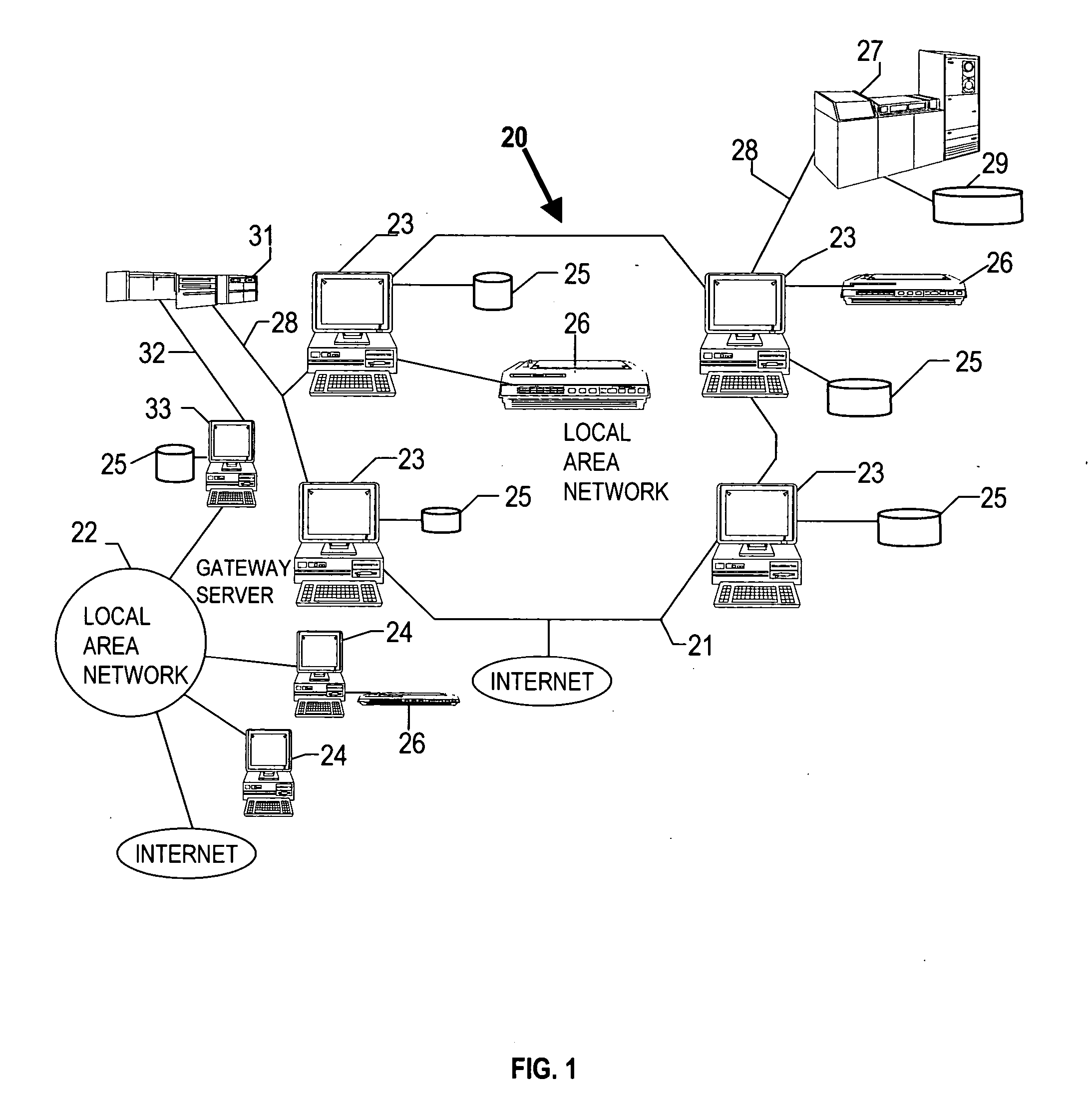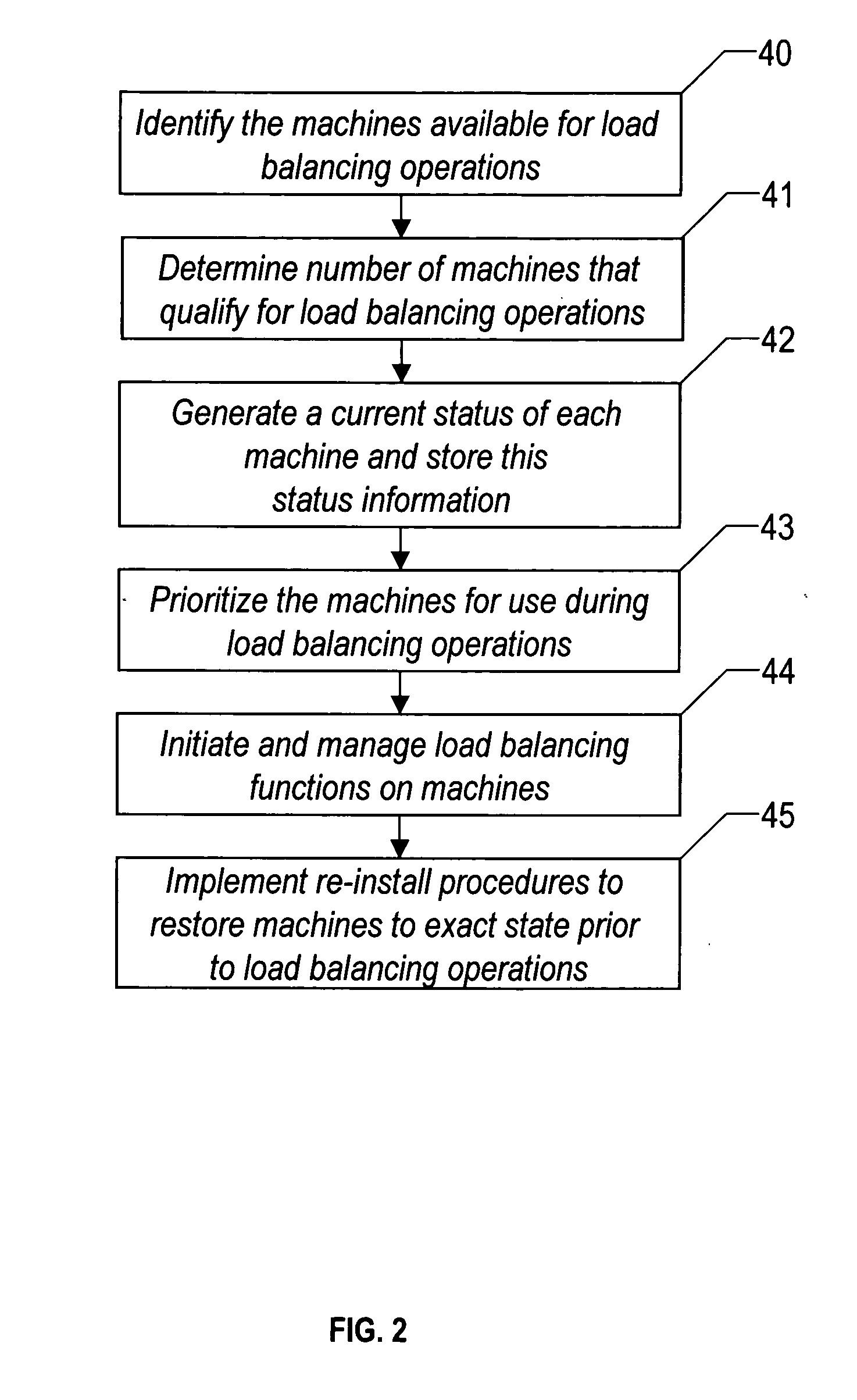Method and system for load balancing of computing resources
a computing resource and load balancing technology, applied in the field of computing resource load balancing, can solve the problems of computing resources being stretched, computing usually sit idle, and no awareness of security policies, and achieve the effect of balancing processing load and reducing load on certain computing equipmen
- Summary
- Abstract
- Description
- Claims
- Application Information
AI Technical Summary
Benefits of technology
Problems solved by technology
Method used
Image
Examples
Embodiment Construction
[0023] The method of the present invention may be implemented in a distributed computer environment such as a local area network or a global computing environment. With reference now FIG. 1, there is depicted a pictorial representation of a distributed computer network environment 20 in which one may implement the method and system of the present invention. As may be seen, distributed data processing system 20 may include a plurality of networks, such as Local Area Networks (LAN) 21 and 22, each of which preferably includes a plurality of individual computers 23 and 24, respectively. Of course, those skilled in the art will appreciate that a plurality of Intelligent Work Stations (IWS) coupled to a host processor may be utilized for each such network. Any of the processing systems may also be connected to the Internet as shown. As is common in such data processing systems, each individual computer possesses processing capabilities that can be used in load balancing applications. One...
PUM
 Login to View More
Login to View More Abstract
Description
Claims
Application Information
 Login to View More
Login to View More - R&D
- Intellectual Property
- Life Sciences
- Materials
- Tech Scout
- Unparalleled Data Quality
- Higher Quality Content
- 60% Fewer Hallucinations
Browse by: Latest US Patents, China's latest patents, Technical Efficacy Thesaurus, Application Domain, Technology Topic, Popular Technical Reports.
© 2025 PatSnap. All rights reserved.Legal|Privacy policy|Modern Slavery Act Transparency Statement|Sitemap|About US| Contact US: help@patsnap.com



